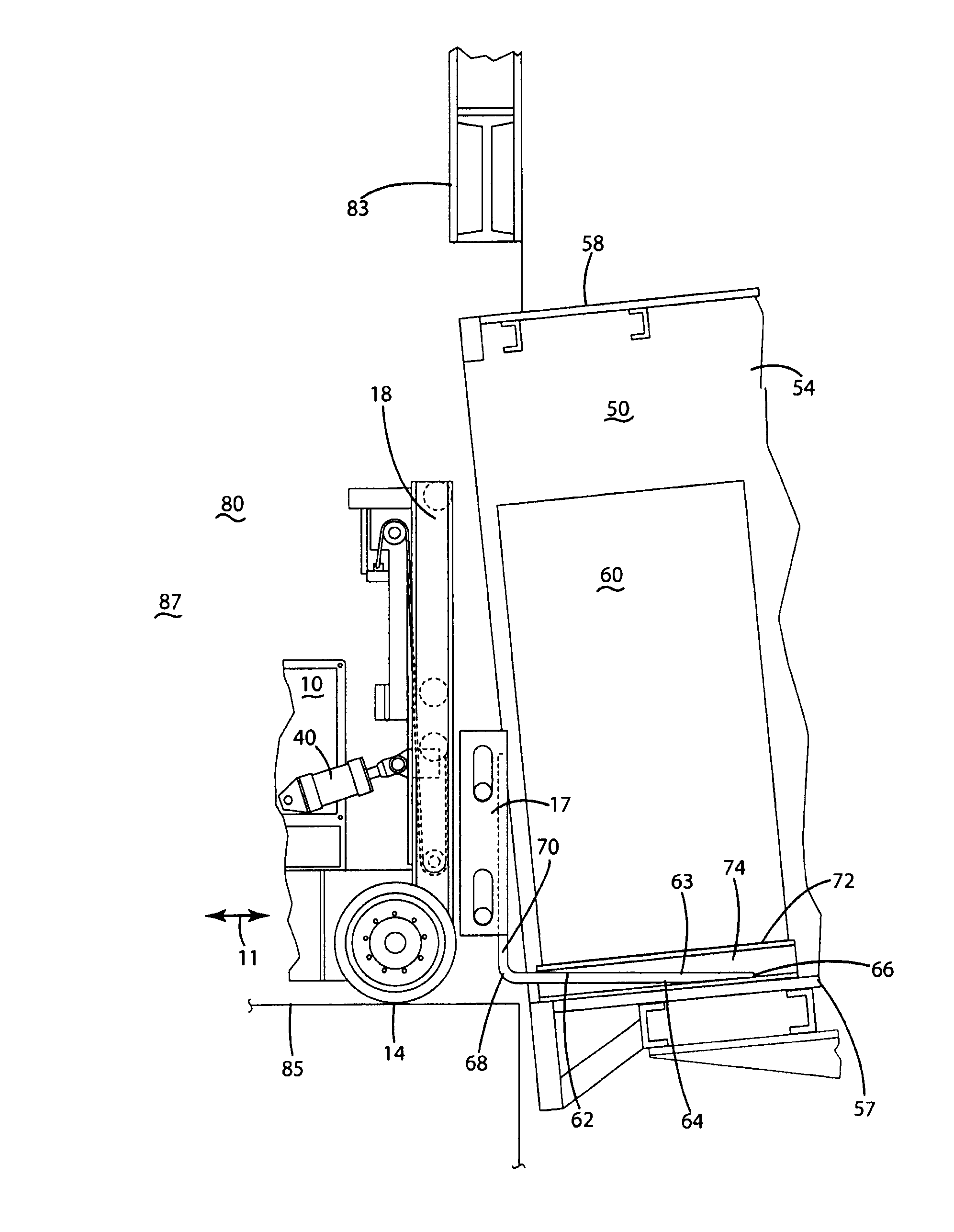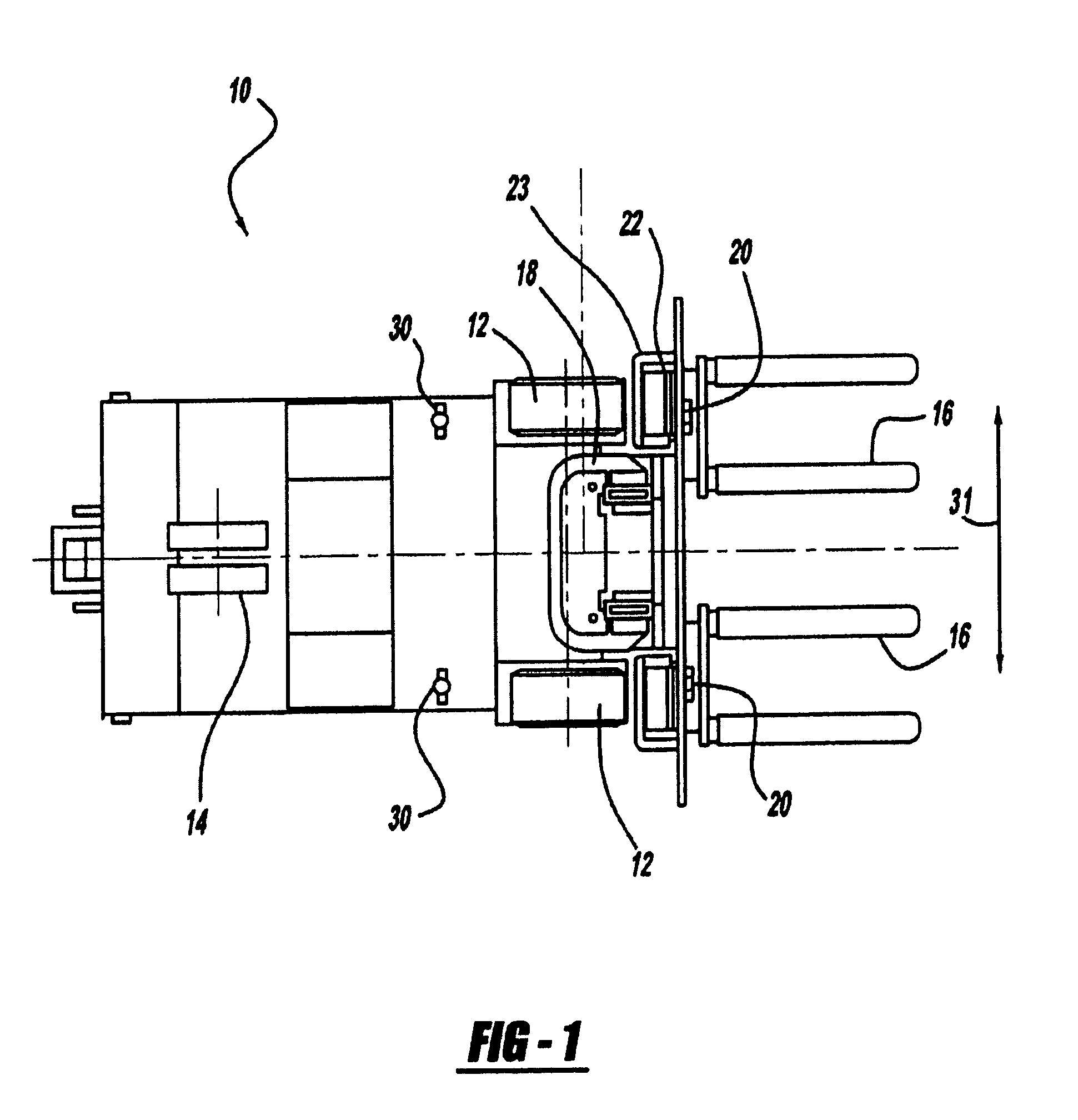Automatic transport loading system and method
a technology of automatic transportation and loading system, applied in the direction of distance measurement, navigation instruments, instruments, etc., can solve the problems of variable position of transport in relation, inability to track inability to adjust the direction of the system, so as to achieve convenient and efficient end of transport loading and effective and efficient
- Summary
- Abstract
- Description
- Claims
- Application Information
AI Technical Summary
Benefits of technology
Problems solved by technology
Method used
Image
Examples
Embodiment Construction
[0038]An automated guided vehicle 10 according to the present invention is illustrated and described with reference to the figures. It should be appreciated that the applications for the automatic loading and unloading of a transport according to the present invention may be used in a variety of applications beyond the illustrated AGV. For example, the present invention may be used with automated guided vehicles of a variety of configurations, as well as other material handling vehicles.
[0039]The AGV 10 includes a steering and drive mechanism that is used to propel and steer the AGV 10. In the illustrations shown, the steering and drive mechanism comprises drive wheels 12 and steerable wheel 14 that are coupled with a guidance system and used to propel and steer the AGV 10. The guidance system turns the steerable wheel 14 as the AGV 10 is propelled, thus steering the AGV 10. Additionally, the drive wheels 12 are preferably dual drive wheels wired in series to create an electrical di...
PUM
 Login to View More
Login to View More Abstract
Description
Claims
Application Information
 Login to View More
Login to View More - R&D
- Intellectual Property
- Life Sciences
- Materials
- Tech Scout
- Unparalleled Data Quality
- Higher Quality Content
- 60% Fewer Hallucinations
Browse by: Latest US Patents, China's latest patents, Technical Efficacy Thesaurus, Application Domain, Technology Topic, Popular Technical Reports.
© 2025 PatSnap. All rights reserved.Legal|Privacy policy|Modern Slavery Act Transparency Statement|Sitemap|About US| Contact US: help@patsnap.com



